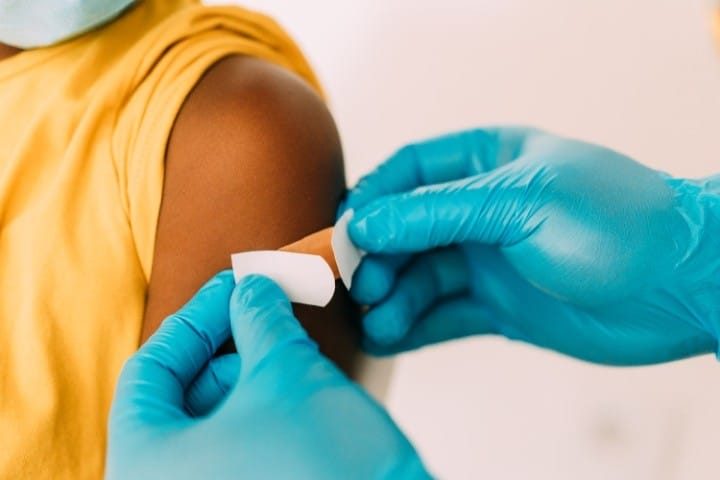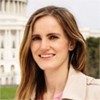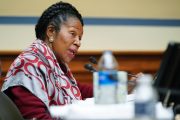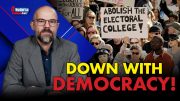
From major news outlets and social media platforms to conservative radio, from Hollywood to NASCAR, from small businesses to faith organizations — the Biden administration created an extensive network for promoting Covid so-called vaccines to make sure they reach all eligible Americans.
The records of those massive efforts became public on Tuesday, thanks to the conservative, nonpartisan, transparency foundation Judicial Watch. According to the organization, it obtained 249 pages of relevant information from the Department of Health and Human Services (HHS) in response to its August 2021 Freedom of Information Act (FOIA) lawsuit.
Judicial Watch specifically asked for “all records regarding the application process; all organizations asking to be chosen to participate; all grants; and all communications of representatives of the Department of Health and Human Services regarding the program.”
The elderly and frontline workers were the first to receive the shots in December 2020. Despite claims that the shots were 95-percent effective at preventing infection and that only a few groups of people were truly at risk of dying from Covid, the administration decided that all eligible Americans needed to receive experimental genetic products. For that, HHS developed a strategy to “educate” Americans on the importance of Covid vaccinations.
The HHS Covid-19 Public Education Campaign document notes that “Getting Americans vaccinated as quickly as possible is our path out of this crisis,” and that “Americans need to be ready and willing to roll up their sleeves when the vaccine is available to them.”
The HHS fact sheet dated April 8, 2021 outlines the following goals of the campaign:
- Educate Americans on how they can protect themselves and slow the spread of COVID-19
- Build trust in the vaccines so more American [sic] are ready to take them
- Increase vaccine uptake by educating Americans about how and where to get vaccinated
The “vaccine confidence” was meant to be built through “five core elements.” According to the strategy, the main effort was to be made by “trusted messengers” and community organizations. The remainder was split between paid media, “earned media,” digital strategy, and the private sector.
The “trusted messengers” were indicated as playing the central role in convincing the most hesitant ones to get the shot, and included nurses, faith leaders, community health workers, and pharmacists.
To really “galvanize” the work of such messengers, HHS created the Covid-19 Community Corps (CCC), which provides “toolkits and resources for Community Corps members to organize within their organizations, communities, and more.” The partners included major national faith, veterans, and professional organizations. The members of the corps received the “latest scientific and medical updates” on the vaccines. That is, official information on the shots’ “safety and efficacy” that was supposed to counter any “misinformation” that questioned those presumed qualities.
Notably, the CCC is advertised as a “grassroots” network, yet it was started by HHS. There was no room for questions or discussions about the jabs, and only the official government message was allowed to be aired. The hosted events and “conversations” were aimed at sharing the information that people needed “to ultimately decide to get vaccinated.”
As for the paid media campaigns, they were “tailored to fit specific audiences,” such as Hispanic, black, American Indian/Alaska native, and Mandarin, and “phased to match the expected supply and demand of the vaccine.”
For example, at the very beginning of the mass-vaccination campaign, in March-April 2021, the “hardest hit” communities were to receive the message through radio, social, print, and digital media that they should get vaccinated and continue to wear masks and social-distance because of the emergence of the new Covid variants.
That phase was called “Slow the spread.”
The next phase started in March, but was planned to run through July, and was called “Preparing the Nation.” People 18 and older and who were “curious” or “actively searching” for vaccine information were targeted. How did HHS know who were “curious” and “searching”? Likely by accessing everyone’s internet browsing history, because it is noted that such an audience should have received the messages “through paid social, digital display, and search engine marketing.”
The “Vaccination (Wave 1)” phase lasted from April to May and targeted adults “across all demographic groups,” with a special emphasis on those aged 65 and up. All channels, including TV, radio, print, out-of-home ads (e.g., billboards), social, and digital, were supposed to “remind” Americans to get their shots.
Many “suggestions” were given to partners in the entertainment industry, including integrating the messages of HHS’s We Can Do This campaign into “scripted and unscripted programming, if and when possible.”
HHS also launched the “Reimagine Main Street Small Business Vaccine Leader” campaign, with a focus on minority-owned small businesses that have a history of mistrust in the medical system (for good reason). The stated goal of this campaign was “to engage with small business owners, specifically business owners of color, as trusted members of their communities….” The partners of the campaign were the U.S. Black Chambers, Inc., the United States Hispanic Chamber of Commerce, and National ACE.
“Ideas” given to corporations included putting “We Can Do This” on virtually everything, from apparel and merchandise to in-store and point-of-purchase promotions. The businesses were advised to send direct texts to employees and customers encouraging them to get jabbed; provide paid time off for those staff who do; and donate advertising time for vaccine messages, among numerous other measures.
On April 19, 2021, when the vaccination campaign had just started to gain steam and Covid shots were only authorized for adults, HHS released a document on how to “Build Parent Confidence in Covid-19 Vaccines” for adolescents, who were not yet eligible to get vaccinated. HHS was clearly preparing for vaccination of a population that was at statistically zero risk of Covid.
One of the document’s chapters, “Covid-19 vaccine authorization for adolescents is imminent,” notes that shots for infants and toddlers were (correctly) predicted to be green-lit in 2022.
“Children are required for herd immunity: 22% of the U.S. population are under 18 years old,” observes the document while lamenting the “vaccine hesitancy among parents” that started “before Covid.”
The strategy targeted moms as the primary decision-makers in the vaccination of children. They needed to be influenced by healthcare professionals, family, and friends. For example, HHS “enlisted mom influencers” on social media to “drive awareness and peer-to-peer conversation.”
Again, HHS emphasized that black children suffered more from Covid than children of other races, which suggested that their mothers required special attention.
Partners in this strategy were the American Academy of Pediatrics and the American Academy of Family Physicians, and “educational” organizations such as teachers unions were also involved.
The released documents detail innumerable media events held by top politicians, all sorts of celebrities, and media personalities to drive the needle.
According to Judicial Watch President Tom Fitton, “These records show a disturbing and massive campaign by the Biden administration to propagandize and politicize the controversial COVID vaccine. It seems as if the entire entertainment industry was an agent for the government!”
The effort included much larger segments of government, public organizations, and businesses than we had room to cover here — all, presumably, to stop the spread of a disease that has a nearly 100-percent survival rate for the average American and for which treatments are readily available.





